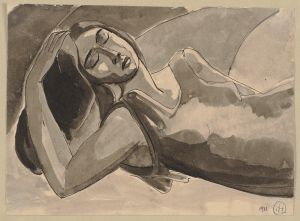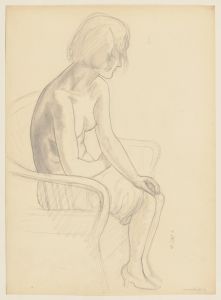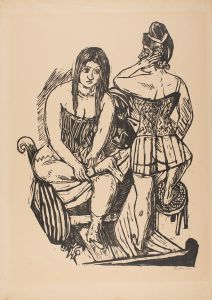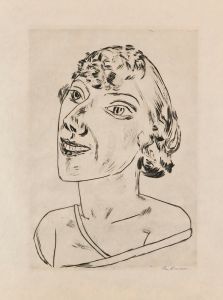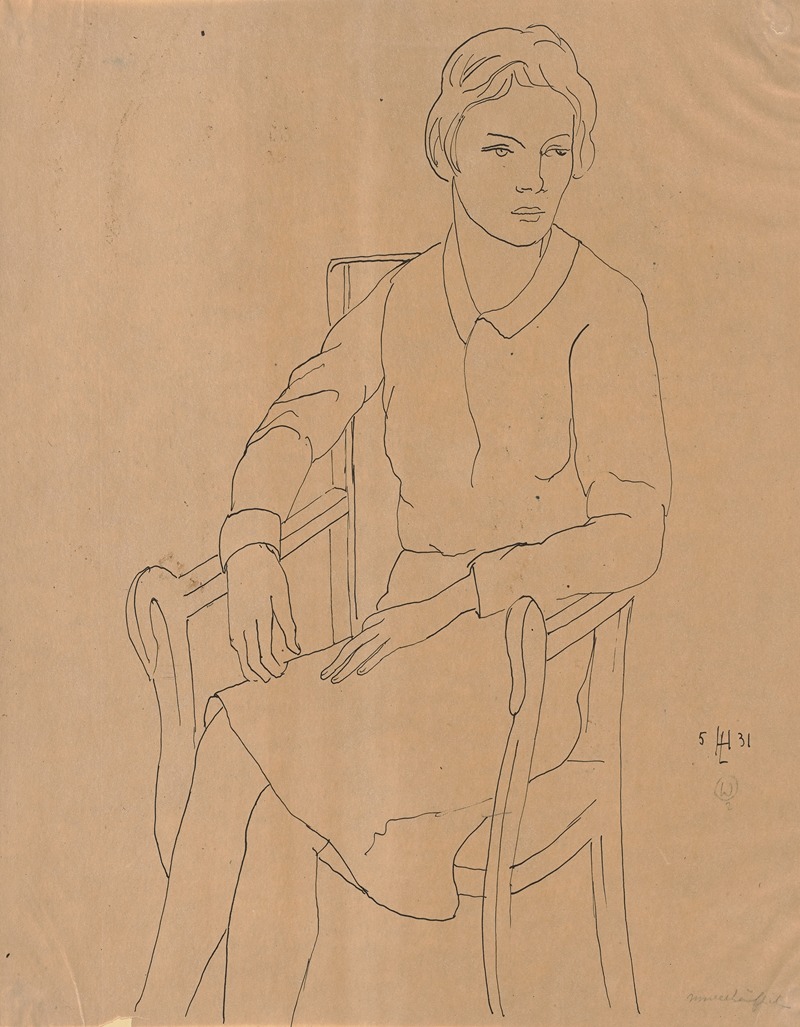
Sitzende Frau auf einem Stuhl
A hand-painted replica of Hermann Lismann’s masterpiece Sitzende Frau auf einem Stuhl, meticulously crafted by professional artists to capture the true essence of the original. Each piece is created with museum-quality canvas and rare mineral pigments, carefully painted by experienced artists with delicate brushstrokes and rich, layered colors to perfectly recreate the texture of the original artwork. Unlike machine-printed reproductions, this hand-painted version brings the painting to life, infused with the artist’s emotions and skill in every stroke. Whether for personal collection or home decoration, it instantly elevates the artistic atmosphere of any space.
Hermann Lismann was a German painter known for his contributions to the Expressionist movement in the early 20th century. One of his notable works is "Sitzende Frau auf einem Stuhl" (Seated Woman on a Chair). This painting exemplifies Lismann's style and the broader trends of Expressionism during that period.
Hermann Lismann was born in 1878 in Germany and studied at various art institutions, including the Academy of Fine Arts in Munich. His work was influenced by the vibrant art scene in Germany, which was characterized by a departure from traditional artistic norms and an embrace of more abstract and emotional forms of expression. Expressionism, as a movement, sought to convey the emotional experience rather than physical reality, often using vivid colors and dynamic compositions.
"Sitzende Frau auf einem Stuhl" is a testament to Lismann's skill in capturing the essence of his subjects through expressive means. The painting features a woman seated on a chair, rendered in a style that emphasizes emotional depth and character over realistic representation. The use of color and form in the painting is typical of Expressionist techniques, where the artist's subjective perspective is paramount.
The composition of "Sitzende Frau auf einem Stuhl" reflects Lismann's interest in the human figure and his ability to convey a sense of introspection and contemplation. The woman's pose and the surrounding elements are depicted in a way that draws the viewer's attention to her inner world, inviting an interpretation of her emotional state. This focus on the psychological aspects of the subject is a hallmark of Expressionist art.
Lismann's work, including "Sitzende Frau auf einem Stuhl," was part of a broader movement that sought to challenge the conventions of art and explore new ways of seeing and representing the world. The Expressionists were often concerned with themes of modernity, alienation, and the human condition, and these themes are evident in Lismann's portrayal of the seated woman.
Throughout his career, Lismann exhibited his work in various galleries and was associated with several art groups that promoted modern art. His contributions to the Expressionist movement were significant, although his work was not as widely recognized as some of his contemporaries. Despite this, Lismann's paintings, including "Sitzende Frau auf einem Stuhl," continue to be appreciated for their emotional depth and artistic innovation.
In summary, "Sitzende Frau auf einem Stuhl" by Hermann Lismann is a notable example of Expressionist art, characterized by its focus on emotional expression and the use of bold colors and forms. Lismann's ability to capture the psychological essence of his subjects places him among the important figures of the Expressionist movement, and his work remains a valuable part of early 20th-century art history.













